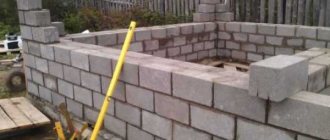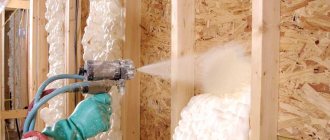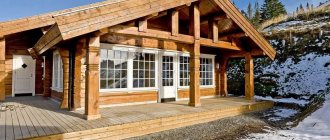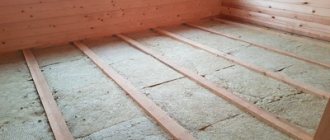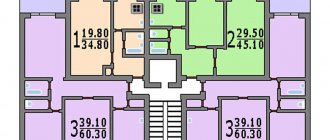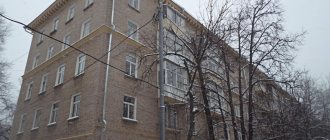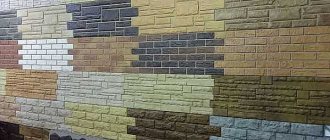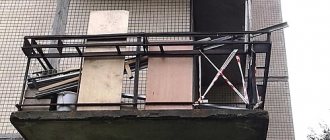Preserving heat in the house is a pressing problem during the onset of frost. Often homeowners are faced with the problem of cold penetration through the seams of panels or joints of structures as a result of poor-quality construction work. Such cracks must be sealed. One of the options for wall insulation is foam, which protects the house from blowing due to reduced thermal resistance.
Pros and cons of using foam
Before deciding to insulate the walls of your house with foam, you need to consider all the advantages and disadvantages of the method. Among the positive features are the following:
- High speed of application, ability to process large surfaces in one approach.
- High resistance of the material to biological factors - insects, mold, fungi, putrefactive bacteria.
- Insulation with pressurized foam from a special sprayer allows you to fill all the smallest cavities and create a seamless coating with a high level of thermal insulation.
- When hardened, the foam composition has a very low specific gravity and therefore does not increase the load on the load-bearing structures of the building.
- The application technology eliminates the use of special fasteners - it simply sticks when sprayed onto the surface.
- The compounds in cured foam are completely safe and non-toxic.
Applying foam from inside a frame house Source ast75.ru
- Simple installation procedure.
- Increased sound insulation of insulated surfaces.
- Contact of foam with pipes, frame elements, roofing sheets and other metal products does not cause a destruction reaction of the latter, but, on the contrary, creates effective anti-corrosion protection.
- Refractory material, does not support active combustion.
But we must take into account some of the disadvantages of foam insulation:
- The total cost of thermal insulation with foam is at least 2 times more expensive than using conventional thermal insulation materials.
- Destruction of the structure due to prolonged contact with water, high air humidity and exposure to direct rays of the sun.
- Insulating a roof with foam, as well as walls, and any other surface of a large area, will require the use of high-performance equipment, which involves additional costs.
- The worker performing the spraying must wear a personal protective suit.
Important! Foam is one of the modern insulation materials that allows you to reliably insulate a house quickly and without additional costs. However, one of the significant disadvantages of a foamed surface is the violation of vapor permeability. Therefore, both inside the building itself and in the insulated elements, it is necessary to provide in advance an effective ventilation and vent system.
Using a protective suit during spraying Source ppuspb.ru
See also: Catalog of companies that specialize in home insulation
Features of foam insulation
The installed foam insulation is a porous polymer mass. The working solution is applied under pressure to the wall or ceiling, foams upon contact with air and hardens. Numerous gas bubbles provide thermal insulation and protect the premises from street noise and vibrations. The elastic structure of the material has sufficient strength and is able to withstand significant static and dynamic loads, increasing the overall strength of the roof.
Sprayed coatings do not have seams and joints through which heat leaks occur in other types of thermal insulation materials.
Types of materials
Foam insulation for walls exists in the following main modifications:
- Penoizol.
Foaming components based on aldehydes and urea polymers. Complete hardening time is about 3 days. Available both in aerosol cans for spraying and in the form of ready-made slabs or granules. It is used for filling cavities when insulating floors, ceilings and walls.
- Polyurethane foam.
PPU is a two-component insulation foam. Immediately before use, the ingredients are mixed into one mixture. This is the most commonly used universal foam material. When the filler is formed, a mass with closed air voids is formed 40 times greater than the original volume.
Polyurethane foam does not absorb moisture, exhibits good adhesion to any materials and is not affected by rodents. Can be used for both external and internal application.
Application of polyurethane foam Source zbbr.ru
- Polyurethane foam.
Based on a modification of polyurethane. Increases in volume from the original by 20 times. It is used from cans for sealing small cavities - when installing windows, doors, pipes, seams, etc.
- Foam concrete.
It is used for pouring and thermal insulation of foundations and reinforced concrete floors. Insulating walls with foam based on concrete mortar is not recommended due to its significant mass and the resulting excessive load on load-bearing structures. Available in both liquid and ready-made block form.
Recommendation! PPU roof insulation creates a reliable heat-insulating coating with little load on the frame. The foam has high adhesion and is applied directly to the inner surface of roofing sheets. At the same time, sufficient thermal insulation can be achieved with a layer of only 5-7 cm.
Roof insulation from the inside using polyurethane foam Source ppuspb.ru
Advice from professionals
PPU insulation is considered a complex technology. It is better to entrust the work to hired specialists. If you decide to master this “art” on your own, you should listen to the advice of professionals:
- When mixing polyurethane foam with water, the ratio is 1:1.
- If the working mixture has darkened, the proportions are not maintained correctly. The properties of the insulation will deteriorate.
- When insulating in the middle zone of the attic, the thickness of the polyurethane foam is applied at least 15 cm.
- Insulation is best done in warm weather, when the air temperature is above + 10 ° C.
- During spraying, moderate humidity is created in the attic. Excess moisture is not allowed. The insulation can peel off from the surface or harden with large air bubbles.
- During operation of spraying equipment, ventilation is provided in the attic.
- Spray foam from a gun, moving from bottom to top. The nozzle is removed from the insulated surface at a distance of 50 cm.
- In one pass, a layer of the required thickness is immediately sprayed. You cannot use a gun to return to areas of foam that have not hardened.
Upon completion of work, the equipment is washed. If polyurethane foam accidentally sticks to the body, carefully remove it with a solvent.
Area of use, recommendations for selection
Construction foam is a universal insulation material. However, due to some differences in the properties of various compositions, it is better to use a specific variety in one case or another. For this there are the following series of recommendations:
- Cracks, defects, and cavities during the installation of windows and doors are sealed with polyurethane. In this case, the frozen material must be protected from direct sunlight.
- Filling the large inter-wall volume of frame structures is carried out using penoizol. Used both externally and internally to form an insulating seal in walls and floors between sheathing sheets.
- Elimination of small-sized irregularities, cracks, seams, and cavities is done using polyurethane foam. For example, when installing solid insulating panels, arranging a foundation, installing windows.
Sealing defects with polyurethane foam Source yandex.net
Polyurethane liquid foam for insulating walls, attics, roofs, and basements creates reliable protection with good waterproofing performance.
Spraying is carried out using special equipment. However, if the volume of similar work is small, then it is quite acceptable to use polyurethane foam from cylinders.
Types of foam insulation
Most often you can find only three types of foam on sale:
- For installation.
- Two-component polyurethane based.
- Penoizol, another name is liquid foam.
There are other varieties, the scope of which is usually clearly stated on the consumer packaging.
Balloon polyurethane foam
It is a heat insulator consisting of only one component. An important point is that a home craftsman can work with it independently.
Types of foam for installation:
- Facade. It is distinguished by an extended operating temperature range - from frost to heat.
- Ordinary. Widely used for sealing cracks and seams.
- Foam glue.
All these materials are applied using a construction gun.
Penoizol
Penoizol is similar in appearance to polyurethane foam, but differs in composition from it. It has a lower degree of density, which allows it to isolate moisture, extraneous sounds and cold. Most often it is used as insulation for residential buildings. To apply the material, you will need a special installation. It is recommended to carry out work in warm and dry weather. The heat insulator completely dries in 5 days.
After this, it will be ready for finishing work.
Spray polyurethane foam
This composition is two-component. It is best suited for thermal insulation of residential buildings. Installation is carried out using balloon equipment. The material hardens very quickly - from 10 to 20 minutes. The structure of the insulation contains closed cells. They are distinguished by minimized thermal conductivity, high quality insulation from extraneous sounds and atmospheric moisture.
The thickness of one layer is about six centimeters. After complete drying, you can apply a second layer, which will give more strength. Sprayed polyurethane foam adheres perfectly to any surfaces and types of materials.
Methods for insulating a main wall
Foam for walls is used to insulate structures in two variations:
- Outside.
- From the inside.
- Combined.
In the first case, the wall material is reliably protected from external atmospheric manifestations. In this case, the zone of condensation formation is shifted into the insulating mass, and not into the wall structure. Therefore, it is reliably protected from destruction under the influence of dampness - rotting and expansion of ice when freezing. In this way, a balance is maintained - heat is retained in the house and the durability of the structure is ensured.
When houses are insulated with foam from the inside, the point of condensation formation moves directly into the wall material. Despite maintaining heat in the room, the material will always be damp. Therefore, in summer it will be susceptible to rotting, and in winter it will be subject to destruction due to expansion during freezing of water.
What is the best way to insulate with foam - from the outside or from the inside?
Thermal insulation with foam has several nuances. It is impossible to take and close all the holes, since then the level of humidity in the room will increase, which will negatively affect the insulation process. For example, the walls will begin to collect condensation and become wet over time, which will certainly affect the performance of the house.
The method of insulation from the inside or outside of the house is largely dependent on what material the walls are made of. If it is a brick, then it is recommended to insulate the structure from the outside using a sandwich scheme, that is, you need to put a layer of insulation between two bricks. Since it has insulating properties, it provides a space with double the effect and warms the rooms in the house with minimal need for additional heating.
In the case of concrete walls, craftsmen use insulation under the drywall during repairs. However, there is always the possibility that improper filling of voids with foam will lead to the formation of a cold bridge. Due to the loose fit of the material, cold street air will penetrate into the house.
Before you decide whether to insulate your home from the outside or inside, you need to determine the dew point. The closer it is to the parameters of the actual humidity temperature in the rooms, the higher the risk that internal insulation will provoke the appearance of wet spots on the walls. This point is calculated by comparing atmospheric pressure, relative and actual temperature conditions.
Do-it-yourself insulation
To make high-quality thermal insulation of a house with foam, while ensuring the safety of the wall material with a guarantee, only a real professional team can do. For those who decide to perform the procedure themselves, we can recommend the following instructions:
- The sheathing is screwed or nailed to the outer sides of the house wall. The slats, 2-3 cm thick and 7-10 cm high, are mounted edge-to-plane. Horizontal and vertical crossbars should form hollow cells with dimensions of 0.5 by 0.5 meters.
- Before starting work, the user puts on a protective suit, gloves, goggles, and a respirator.
Insulation of walls with polyurethane foam Source stroy-podskazka.ru
- The spraying equipment is brought into readiness, the container is filled (foam for wall insulation in cylinders is connected to the gun), its serviceability and performance are checked.
- The cavities of the sheathing are filled from edge to center with foam, taking into account its subsequent expansion - in full accordance with the instructions from the manufacturer.
- Upon completion of the work, the material is given time to completely harden.
- The frozen mass is leveled and finished with panels, sheet materials or plaster.
It is important to know! The choice of modification and foam manufacturer depends on the preferences, conditions of use and financial capabilities of the individual user. For example, you can simply foam the walls of your house with polyurethane foam. However, before starting work, it is recommended to find out as much information as possible about the composition used - from the seller, on the manufacturer’s website, in reviews, from craftsmen. It is better to give preference to a more reliable, safe and high-quality composition.
Cost of work
| The name of the manipulations performed. | Price per 1 cubic meter/rub. | Price per 1 square meter/rub. | Spray/plate thickness |
| Spraying penoizol | 36 kg – 450; 53 kg - 800; 36 kg - 900; 53 kg – 1550; 36 kg – 1500; 53 kg – 2600; | 0 0 0 | 3 6 10 |
| Purchased foam sheets | 0 0 0 | 1200 1800 2300 | 10 15 20 |
| Pouring during construction | 1500 | 0 | 0 |
| Pouring into prepared cavities | 1500 | 0 | 0 |
| Filling with cavity drilling service | 1700 | 0 | 0 |
*
Briefly about the main thing
Insulating a house with foam has the following number of advantages:
- No load on structures.
- Seamless and hermetic filling of cavities.
- Biological resistance.
- Fire safety.
- Harmlessness.
- Creation of anti-corrosion protection for metal elements.
- Simple application procedure.
Disadvantages - high cost, low water resistance and sun protection, the need to use a protective kit during spraying. The most common types of foam insulation are penoizol, polyurethane foam, polyurethane foam and foam concrete.
The materials can be used both in liquid form and in the form of finished panels and blocks. The main purpose is to seal cracks and cavities, fill frame walls, insulate roofs, basements, floors, and facades. Thermal insulation can be done independently according to the instructions, but it is better to entrust the procedure to professionals.
Ratings 0
Is penoizol harmful to health?
When the foam substance polymerizes, a small amount of formaldehyde is released. But its concentration is so low and its presence is so fleeting that formaldehyde is safe for specialists performing work in protective clothing. Many paint and varnish products are much more dangerous in terms of harmful emissions. The safety of already hardened penoizol is confirmed by relevant certificates received by manufacturers after professional testing.
Advice! Do not try to save money on cheap compounds from unknown manufacturers that do not have certificates of conformity and product safety.
Thermal insulation of the façade with foam insulation and cladding with cladding slabs
With this method, the process of filling the air cavity with foam insulation is preceded by more labor-intensive preparation and installation of the restrictive lining. Frame elements (galvanized metal profiles) are vertically attached to the façade wall. Facing panels made of plastic or metal are attached to them (the choice is up to the owners). After installation, a three-layer structure is obtained - a base, an air layer, and an outer cladding. Its insulation is carried out using inter-wall thermal insulation technology. After filling the filler holes, the facade is decorated.
A simplified version of facade insulation using a membrane:
After studying the characteristics of the thermal insulation material and the rules for working with it, it can be argued that choosing penoizol is a profitable, reasonable decision. Having assessed the quality of the house insulation, many developers will add liquid foam to the list of top thermal insulators.
Tools
When filling internal gaps and cavities, you will need a hammer drill (to form foam filling points) and a knife to remove dried excess insulation.
When insulating surfaces, a frame can be constructed; usually, subsequent protection of the insulation with vapor barrier films and a layer of facing material is required. In these cases, the list of tools is supplemented by a drill, screwdriver, hammer, level, and stapler. Due to the specifics of the work and differences in objects, the list may be adjusted upward and vice versa.
Making molds at home
PVC tiles: pros and cons
To obtain a quality casting, you must follow the following guidelines:
- The model and frame of the mold are prepared to be filled with polyurethane foam. The form is a natural material (stone or wood, plastic, plaster or concrete). Before pouring, the product and base must be firmly fixed and treated using special lubricant. This will help you release the mold without any effort after drying. The base is leveled.
- Preparation of ingredients. Before mixing, the elements must be prepared. All components are thoroughly mixed separately in advance. It is necessary to prevent contact of materials with moisture. Not recommended for use in rooms with high humidity.
- Each component is weighed separately. The ratio of elements is calculated directly by mass. The amount of liquid material remaining on the walls of containers used for mixing is taken into account. To calculate the required mass of components for the mold, the specification for the material is studied. Usually it comes with polyurethane foam.
- Mixing elements. Taking into account the quantity, 2-component polyurethane foam is mixed by hand using a spatula or other profile hand-held device (weight up to 5 kg). As an alternative, you can use electrical equipment, you can take a construction mixer or a drill with a mixing attachment. Mix the prepared elements thoroughly for 1 minute until a homogeneous mixture appears. The emphasis is on the adjacent walls. In order not to use a poorly mixed compound during pouring, you need to pour the finished mixture into another container and mix again. The volume of the latter should be twice as large as the previous one, since the polyurethane foam will increase in size.
- Vacuum processing of polyurethane foam before pouring the mold. To displace air from a liquid polyurethane mixture, you need to send it to a degassing device. After 2 minutes the air will be displaced and the material can be used.
- Pouring polyurethane foam into the base of the mold. The liquid material is poured from the corner evenly, eliminating the penetration of air. The pouring is controlled so that the level of the mass rises equally on each side during casting. The mass is poured until the polyurethane layer is sufficient.
- Seizing the material. The hardening process will take 1-2 days, taking into account the material itself and the thickness of the walls. The model remains inside until it dries completely or is removed when it has frozen sufficiently (after which it is dried). Similar actions are carried out with the frame. The product will dry faster at high temperatures, up to 70 degrees.
Preparation of polyurethane
Polyurethane foam for the production of molds is a polymer material that is obtained by mixing polyol and isocyanate. Elastic and solid, it is popular in construction and restoration work. The main emphasis is on basic safety rules. It is necessary to prevent penetration of the compound onto the open surface of the skin and into the eyes.
Customer Reviews
The house was built 20 years ago and is insulated with glass wool. And all this time there was no feeling of comfort that I had always strived for. Having learned about it, the decision was immediately made to insulate the house with polyurethane foam. Efficiency, modern materials, hermetic insulation - that's it.
The house was built 20 years ago and is insulated with glass wool. And all this time there was no feeling of comfort that I had always strived for. Having learned about it, the decision was immediately made to insulate the house with polyurethane foam. Efficiency, modern materials, hermetic insulation - that’s what attracted me to the work of this company.
Where to start finishing
If during the work the foam composition is poured into the layer between the elements of a well or three-layer masonry, prepare holes in the material of the outer layer to supply insulation through them. This applies to already completed buildings. When insulating structures during their construction, drilling is not required.
It is necessary to clean the base from dust, prepare a frame or sheathing, between the elements of which liquid material will foam.
At the preparatory stage, it is important to choose high-quality working material. When purchasing the composition, a demonstration sample of the prepared penoizol should be dazzling white, not literally settle before our eyes after leaving the supply hose, after 12-15 minutes. must withstand pressure by hand and quickly restore its shape; large or heterogeneous pores should not form in the volume of high-quality insulation.
Advantages of polyurethane foam
Maximum level of thermal insulation
Simplicity and high speed of installation
100 square meters - approximately this area can be covered with material in just one working day
Durability
On average, the thermal insulation layer retains its qualities for up to 50 years
Resistance to high humidity
Does not cause interest to rodents and insects
Installation does not require preliminary finishing
Does not burn
Belongs to fire safety class G1
Improves sound insulation of the room
Easily takes any shape
Can be used on any structures
Provides maximum layer tightness
Thermal insulation of PPU roofing: your benefits, our efforts
For construction organizations - thermal insulation of PPU roofs and waterproofing of roofs of newly constructed or reconstructed facilities according to your or our turnkey project. You are getting:
- reduction of construction time;
- The guarantee covers the period of liability of the developer (performer of the work).
Owners of industrial buildings - insulation of the roof of an industrial building. You are getting:
- thermal insulation of roofs in any condition, the ability to postpone the replacement of the existing roof covering;
- carrying out work without disrupting the operation of the enterprise.
Management companies, housing and communal services organizations and municipalities - insulation of roofs of apartment buildings, public and administrative buildings. You are getting:
- guaranteed compliance with the requirements of Federal Law N 261-FZ “On energy saving and increasing energy efficiency...”;
- “minimal presence effect” during work - no disturbance for residents, employees of organizations, customers, etc.
Necessary equipment
Complex and expensive specialized equipment is necessary when using penoizol in liquid form. Sheet and granular materials are handled with a minimum set of simple tools. The sheets are installed similarly to other insulation materials (expanded polystyrene, penoplex and others), and the filling of air voids with granules is carried out by backfilling and blowing.
The installation for producing and applying liquid foam has containers for each component of the future mixture. When you turn on the device, the ingredients are mixed in a separate chamber. There, thanks to air supplied under a certain pressure, foaming of the resulting composition occurs. Foam is supplied through the sleeves to fill insulated openings or apply to the required surfaces. The equipment set includes a compressor and containers with reagents.
Compressor for preparing working foam
Since liquid penoizol must be prepared immediately before use, a set of equipment must be delivered and located at the work site. At small sites, low-cost gas-liquid installations are used, and for large-scale works, pneumohydraulic ones are used.
Consumer properties
Like any insulating material, Polynor has a number of advantages:
- Features excellent heat conservation. These insulation indicators are higher compared to expanded polystyrene and mineral wool.
- Non-toxic. Consumer reviews about Polinor are quite good, since it is not poisonous and does not require protective equipment when using it.
- Ease of use. When using POLYNOR, a heat-insulating layer is created, which does not require a frame for fastening. Also, no tools or auxiliary materials are required.
- Excellent grip. The composition quickly adheres to any surface - brick, wood, plastic, stone, concrete, which significantly expands the scope of its application.
Polynor insulation is very popular due to the fact that it is applied by spraying. This affects better adhesion of different surfaces, even if they are not very smooth. Very often this insulation is used to finish hard-to-reach places, for example, where pipes or cables are laid.
